When you think of ocean creatures, you probably imagine fish, dolphins, and maybe a shark or two. But the ocean is vast and mysterious, and it’s home to some truly bizarre inhabitants that seem like they belong in a sci-fi movie. Some of these creatures look so strange and otherworldly that you might wonder if they’re even real. Spoiler alert: they are! Let’s dive into a list of 14 ocean creatures that look like they’re straight out of your wildest imagination but are totally real.
1. Blobfish
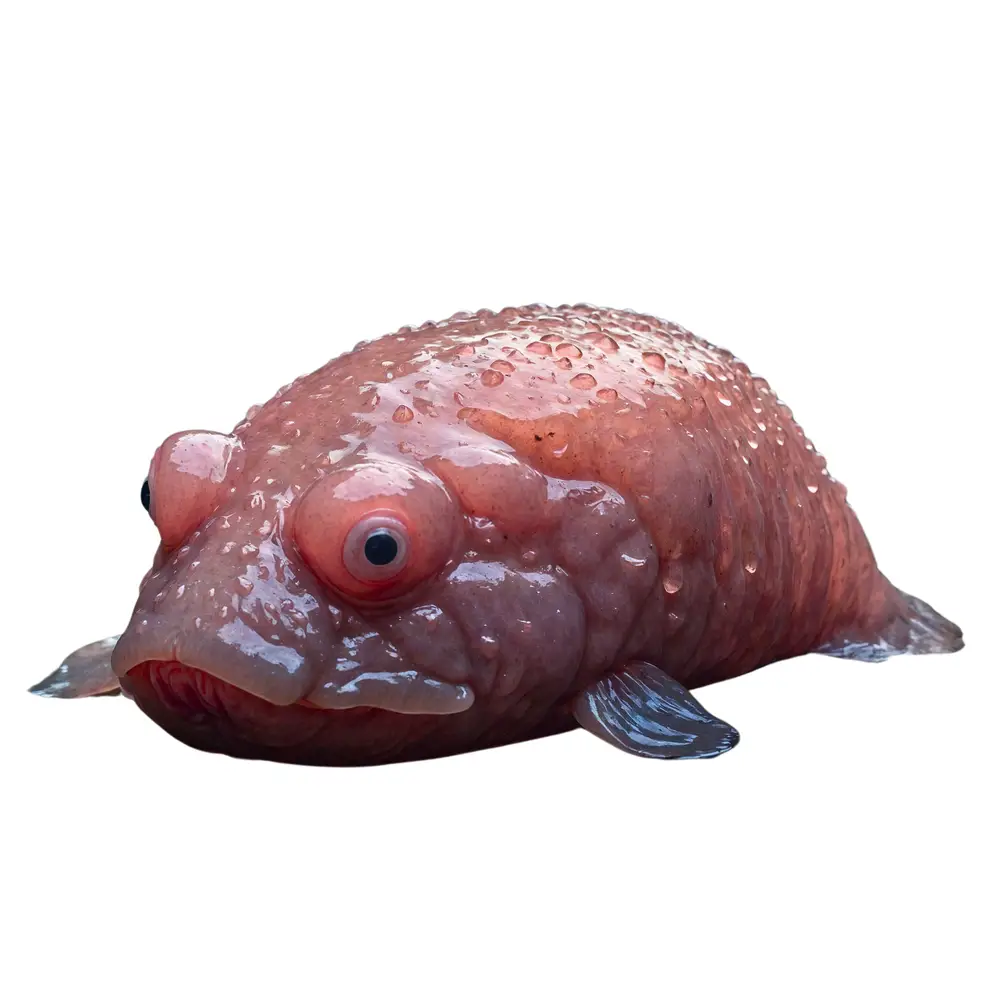
The blobfish is a deep-sea dweller that looks like it’s perpetually having a bad day. With its gelatinous body and droopy expression, it’s often voted the world’s ugliest animal. The blobfish lives in the deep waters off the coast of Australia and New Zealand. At such depths, its squishy physique actually serves a purpose, allowing it to withstand high-pressure environments. According to marine biologist Dr. Daniel Distel, its unique adaptation makes it incredibly efficient at surviving where many species cannot.
Though it may not win any beauty contests, the blobfish has a charm all its own. It became an internet sensation after photos of its peculiar appearance went viral. Despite its odd looks, the blobfish is not much different in structure from other fish, just with less bone and muscle due to its deep-sea habitat. It spends most of its time floating above the ocean floor and feeding on small edible matter. While it might not be the life of the party in the ocean’s ecosystem, it plays a crucial role in the food chain.
2. Leafy Sea Dragon
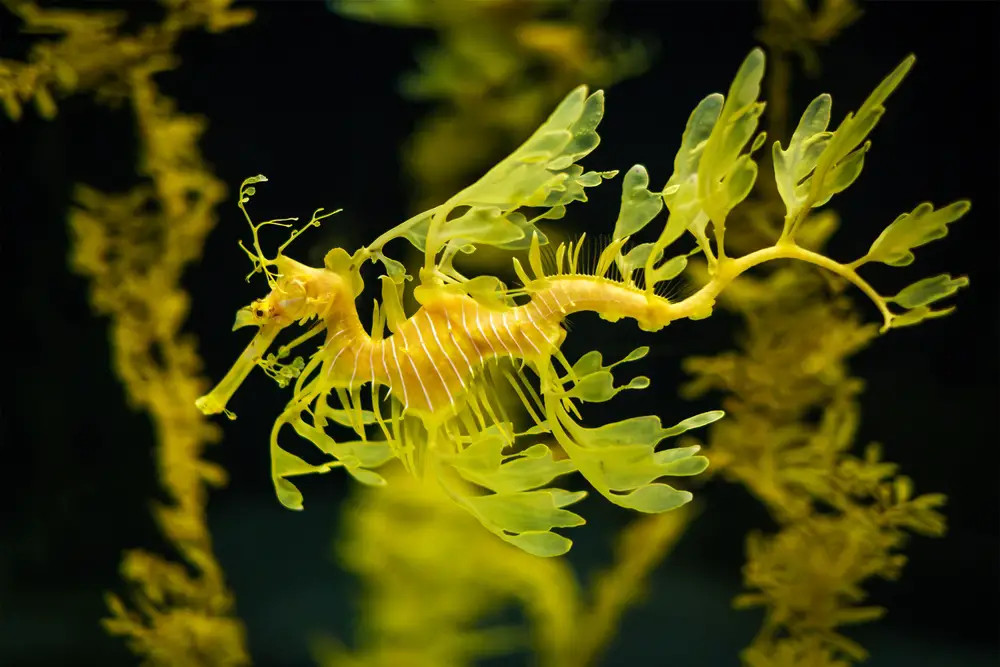
The leafy sea dragon is a true master of disguise. These creatures are closely related to seahorses and are covered in leaf-like appendages that help them blend into their seaweed-filled environments. You’ll find them off the southern and western coasts of Australia, where they drift along the ocean currents. The leafy sea dragon’s camouflage is so effective that spotting one is a rare treat for divers. They use their leaf-like structures not for swimming but purely for camouflage.
These creatures are fascinating not just for their appearance but also for their reproductive habits. Like seahorses, it’s the males that carry the eggs. Female leafy sea dragons deposit their eggs onto a special area on the male’s tail, where they are fertilized and carried until hatching. This unique reproductive method is just another way these creatures stand out in the marine world. Despite their elaborate appearance, leafy sea dragons are surprisingly fragile and are classified as a near-threatened species.
3. Axolotl
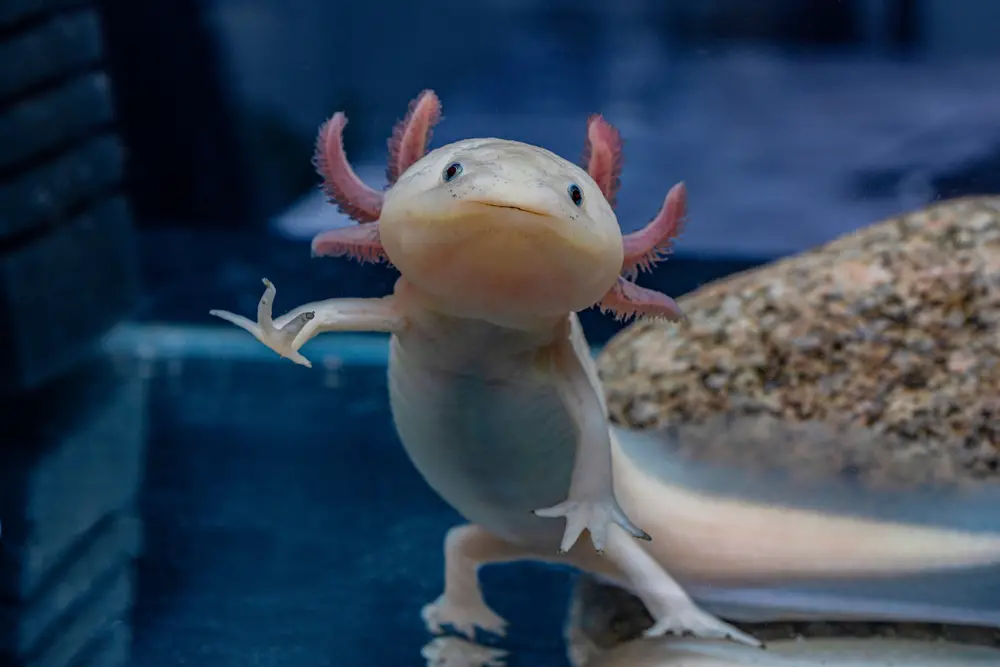
Although not an ocean creature per se, the axolotl is an aquatic wonder that deserves mention. These curious creatures are native to the lake complex of Xochimilco near Mexico City. Known for their regenerative abilities, axolotls can regrow limbs, spinal cord segments, and even parts of their brain and heart. According to a study by Dr. Karen Echeverri, this unique ability is due to specific proteins that regulate tissue regeneration. Their name comes from the Aztec words “atl,” meaning water, and “xolotl,” which refers to a god of deformities and death.
Axolotls are often mistaken for fish, but they’re actually a type of salamander. Unlike other salamanders, they remain in their larval form throughout their lives, a phenomenon known as neoteny. This means they retain their feathery external gills and aquatic lifestyle. In the wild, axolotls are critically endangered due to habitat loss and pollution. However, they are popular in the pet trade and are frequently used in scientific research due to their remarkable regenerative properties.
4. Vampire Squid

The vampire squid might sound terrifying, but it’s actually a gentle creature of the deep sea. Named for its dark color and cloak-like webbing between its arms, the vampire squid is more about aesthetics than actual vampirism. These creatures inhabit oxygen-poor environments at depths of 2,000 to 3,000 feet. Unlike other squids, the vampire squid doesn’t rely on ink to evade predators. Instead, it employs bioluminescent displays that can confuse and deter threats.
Despite its fearsome name, the vampire squid is a passive feeder. It survives by catching marine snow—tiny particles of organic matter that fall through the water column. Its retractile sensory filaments help it detect these particles in the dark depths of the ocean. The vampire squid is a specialized creature, perfectly adapted to its low-oxygen environment. It’s a testament to the incredible adaptability and diversity found in deep-sea ecosystems.
5. Mantis Shrimp
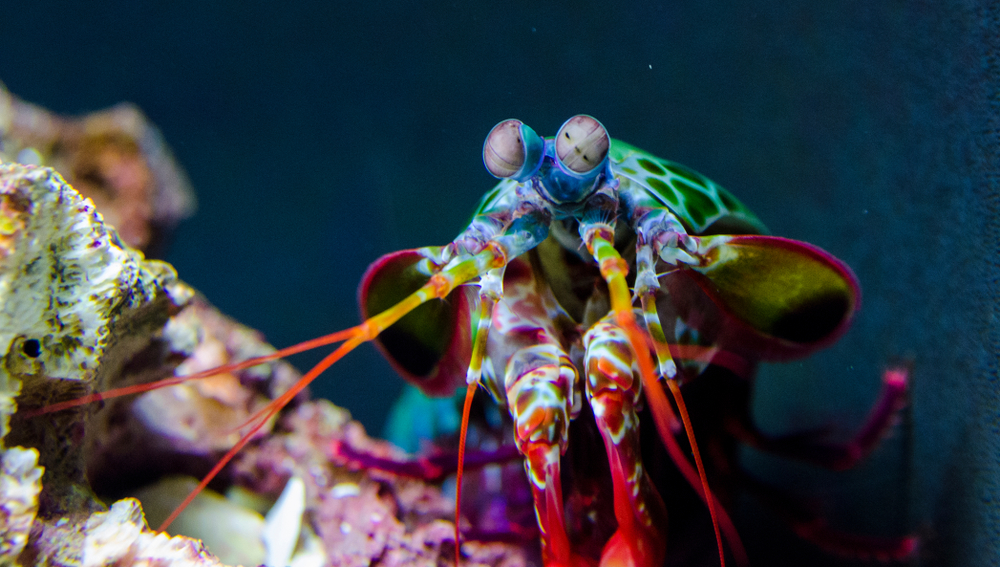
With its vibrant colors and lightning-fast strikes, the mantis shrimp is like a little underwater superhero. Found in warm, shallow waters, these creatures have one of the most complex visual systems known. They can see polarized light and have trinocular vision, meaning each eye can judge depth and distance on its own. According to Dr. Roy Caldwell, a leading researcher on mantis shrimp, their eyes contain twelve types of photoreceptors, compared to humans’ three. This gives them unrivaled vision capabilities in their murky underwater habitat.
Mantis shrimp are divided into two categories: “spearers” and “smashers,” based on their hunting strategies. Spearers use sharp appendages to snag prey, while smashers have club-like appendages to bludgeon their targets. These strikes are so powerful that they can break glass aquariums and are among the fastest movements in the animal kingdom. Despite their small size, mantis shrimp are formidable predators in their domain. Their unique adaptations make them one of the most intriguing creatures of the sea.
6. Anglerfish
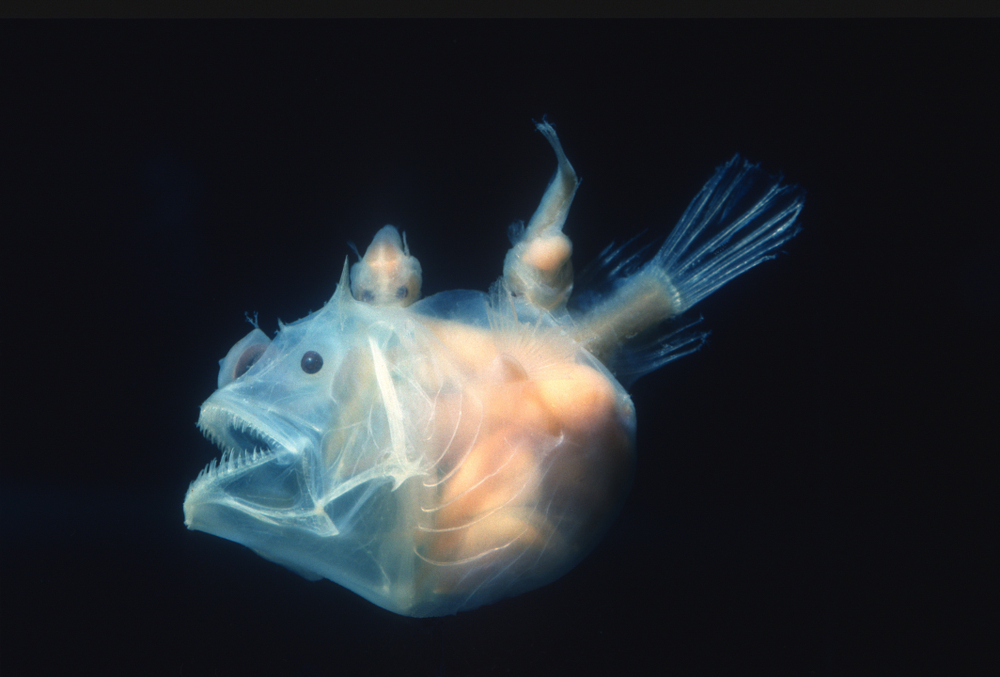
Anglerfish are perhaps best known for their unusual method of attracting prey. These deep-sea predators have a bioluminescent lure hanging from their heads, which they use to entice unsuspecting victims in the dark ocean depths. The lure, a modified dorsal spine, emits light thanks to symbiotic bacteria that produce bioluminescence. This eerie glow lures smaller fish right into the anglerfish’s waiting jaws, making it an effective and deadly hunting strategy. Female anglerfish are the hunters, with males being significantly smaller and sometimes parasitic.
The anglerfish’s bizarre appearance and hunting technique make it seem like something out of a horror movie. But in the depths where sunlight doesn’t reach, their adaptations are perfectly suited for survival. Anglerfish have large mouths and expandable stomachs, allowing them to consume prey up to twice their size. This is a crucial ability in an environment where meals are few and far between. Despite their fearsome reputation, anglerfish are a marvel of evolutionary innovation.
7. Nudibranch
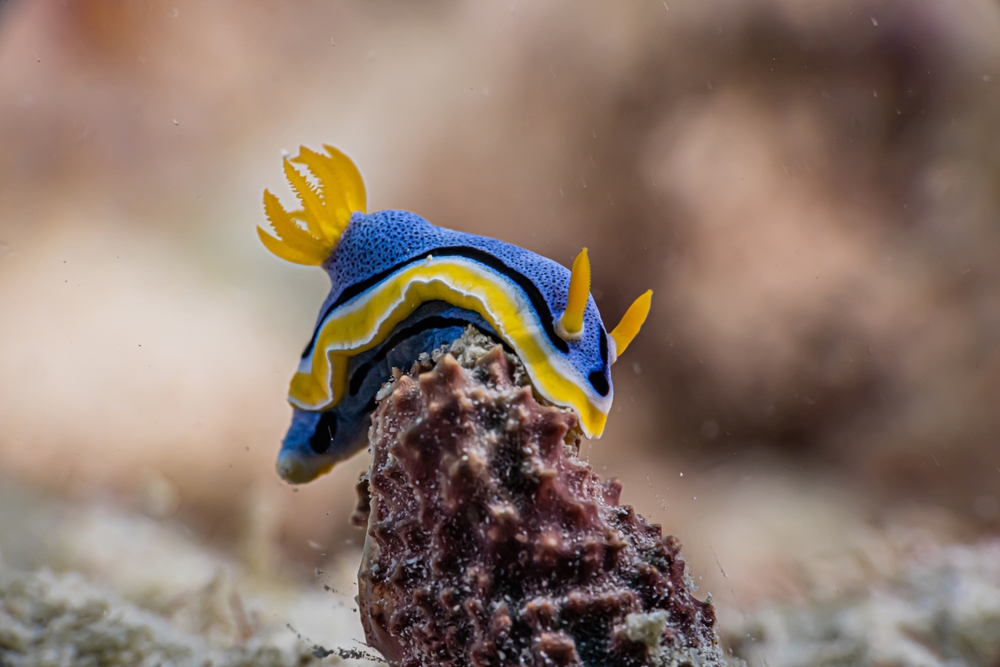
Nudibranchs, or sea slugs, are some of the most colorful and diverse creatures found in the ocean. They come in a dazzling array of shapes and colors, often resembling pieces of abstract art. These soft-bodied mollusks are found in oceans worldwide and are particularly abundant in coral reefs. Marine ecologist Dr. Rebecca Johnson notes that nudibranchs can indicate the health of marine ecosystems due to their sensitivity to environmental changes. Their striking colors serve multiple purposes, from camouflage to warning predators of their toxicity.
Nudibranchs have an unusual diet that can include sponges, hydroids, and even other nudibranchs. Some species can incorporate the stinging cells of their prey into their own bodies for defense. Others can absorb toxins and make themselves unappetizing to predators. Despite their small size, nudibranchs play an important role in the ocean’s food web. Their vibrant appearance and fascinating behaviors make them a favorite among divers and marine enthusiasts.
8. Goblin Shark
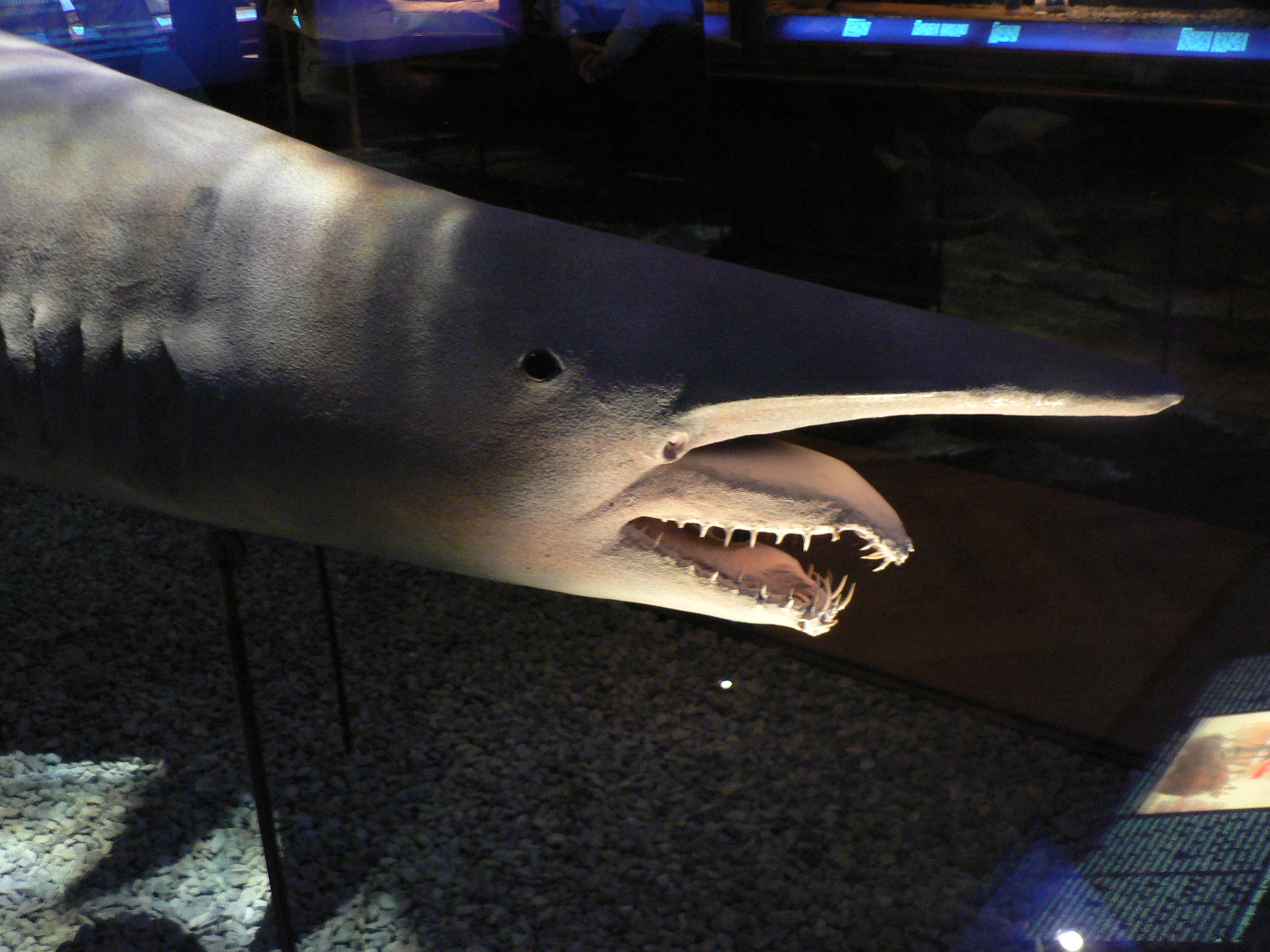
The goblin shark is often described as a “living fossil,” due to its ancient lineage and distinct appearance. With its elongated snout and protruding jaws, it’s not hard to see why this deep-sea shark is frequently labeled as bizarre. They inhabit the deep waters of the continental slopes, usually at depths of over 100 meters. Goblin sharks are elusive and rarely encountered by humans, contributing to their mysterious reputation. Their pinkish-gray skin and unique physical traits add to their otherworldly aura.
Goblin sharks are ambush predators, using their extendable jaws to snatch prey. They have electro-sensitive organs in their snouts, allowing them to detect the electric fields produced by other animals. This adaptation is crucial for hunting in the dark ocean depths where visibility is minimal. Despite their fearsome looks, goblin sharks are slow-moving and not considered a threat to humans. Their peculiar features and ancient origins continue to intrigue scientists and ocean enthusiasts alike.
9. Immortal Jellyfish

The immortal jellyfish is a creature that has baffled scientists with its unique ability to reverse its aging process. Native to the Mediterranean Sea and waters off Japan, this jellyfish can transform itself back to its juvenile polyp stage when faced with injury or environmental stress. This process, known as transdifferentiation, essentially allows the jellyfish to start its life cycle anew. While this doesn’t make them truly immortal, it does give them an incredible survival advantage. It’s a fascinating example of nature’s ingenuity.
Immortal jellyfish are tiny, with bell sizes reaching only about 4.5 millimeters. Despite their small size, their biological abilities have large implications for scientific research. Researchers hope that understanding the mechanisms behind their age-reversal could provide insights into human aging and regenerative medicine. In the wild, these jellyfish are not invincible and still face threats from predation and disease. However, their remarkable life cycle continues to captivate the imagination of those studying marine life.
10. Salp
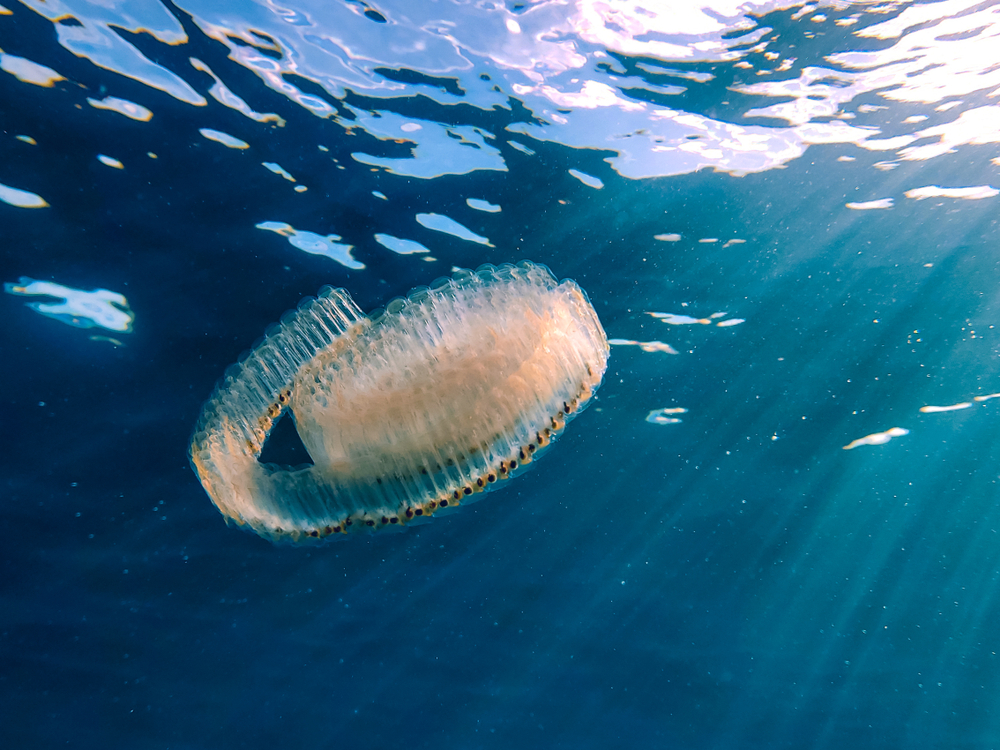
Salps are barrel-shaped, gelatinous creatures that drift through the ocean, often in long chains. Despite their simple appearance, they play a vital role in the marine ecosystem as filter feeders, consuming phytoplankton and other microscopic organisms. Salps are found throughout the world’s oceans and are particularly abundant in colder waters. They have a unique ability to reproduce rapidly, forming dense blooms that can impact local food webs. Their transparent bodies and rhythmic contractions give them an otherworldly, alien-like appearance.
Salps have an interesting life cycle, alternating between solitary and colonial forms. During their colonial phase, they can form long chains made up of hundreds of individuals. These chains can be quite a spectacle, drifting like ghostly ribbons through the water. Despite their gelatinous bodies, salps are efficient swimmers, moving by contracting and expelling water. Their role in carbon cycling and the ocean’s food web highlights the importance of even the simplest-looking organisms in maintaining ecological balance.
11. Sea Pen
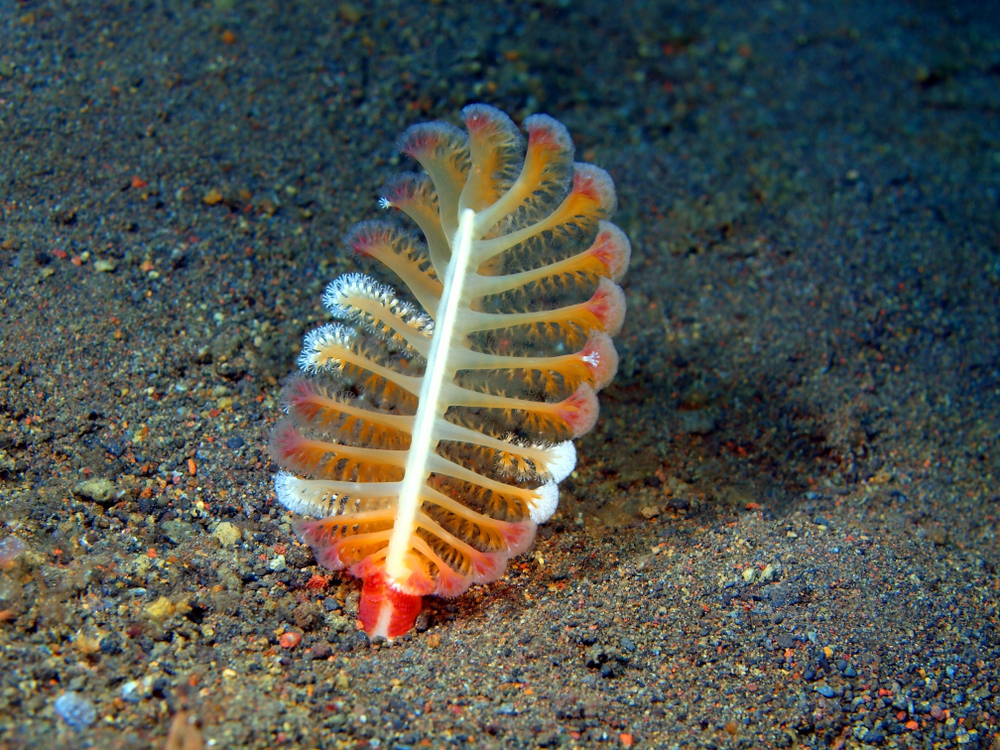
Sea pens are a type of colonial marine cnidarian, named for their resemblance to old-fashioned quill pens. These fascinating organisms anchor themselves in soft ocean sediments, with their upper parts waving in the water to capture plankton. Found in oceans worldwide, they can thrive in both shallow and deep waters. Sea pens are not single organisms but colonies of polyps that work together to feed, reproduce, and grow. This colonial lifestyle gives them a unique structure and functionality.
These creatures have a remarkable ability to emit light when disturbed. This bioluminescence can startle predators and attract attention to an otherwise inconspicuous organism. Sea pens can also retract into the sediment if threatened, providing them with a level of protection. Their unique appearance and behavior add a touch of the extraordinary to the underwater landscape. Despite their simplicity, sea pens are a vital component of the ocean’s diverse ecosystems.
12. Flamingo Tongue Snail
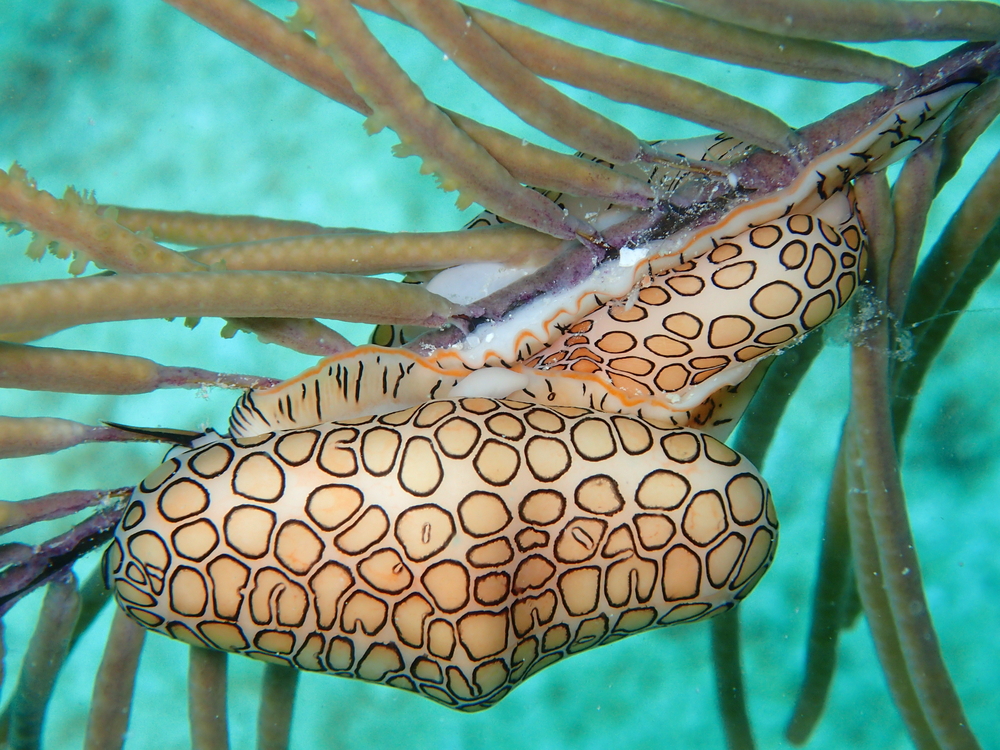
The flamingo tongue snail is a small, brightly colored marine gastropod that resides on coral reefs in the Caribbean and along the Atlantic coast. Its vibrant appearance comes not from its shell, but from the mantle tissue that covers it. This tissue features striking patterns of orange or yellow with black spots, making the snail a standout on the reef. The flamingo tongue snail feeds on soft corals, absorbing their toxins and incorporating them into its own body for defense. This adaptation makes it less appealing to potential predators.
Despite their eye-catching appearance, flamingo tongue snails have been declining in number due to over-collection by divers and snorkelers. Their conspicuous presence makes them a target for those seeking souvenirs or photographs. However, these snails play an important role in the reef ecosystem, helping to control coral populations. Conservation efforts aim to protect these snails and the delicate balance of life on the reefs. Their unique beauty serves as a reminder of the intricate relationships found within marine environments.
13. Barreleye Fish
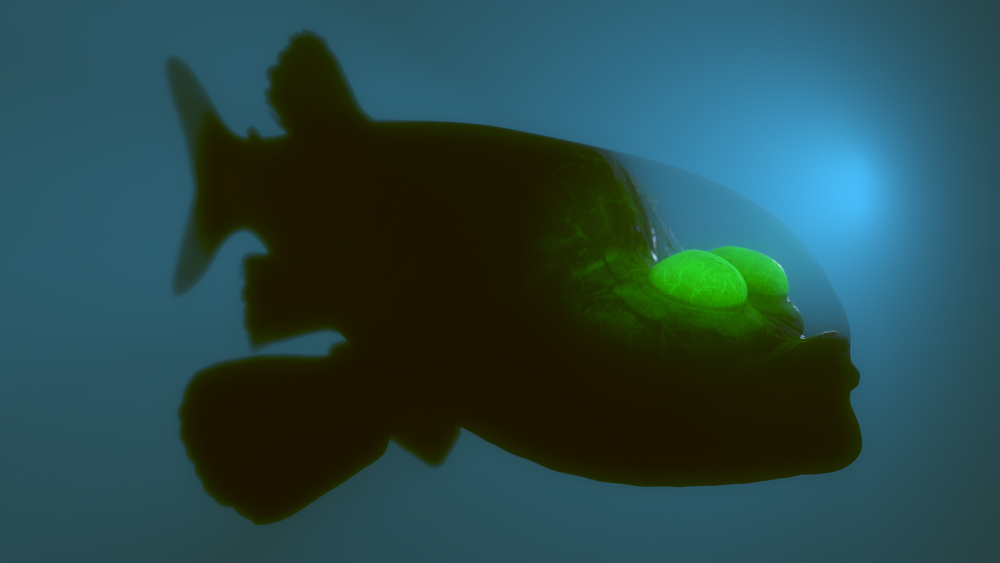
Barreleye fish are deep-sea creatures known for their transparent heads and tubular eyes. These eyes are enclosed in a fluid-filled dome, allowing them to rotate and look upward to spot prey. Found at depths ranging from 400 to 2,500 meters, barreleye fish live in the twilight zone of the ocean. Their transparent heads provide a window into their internal anatomy, a rare glimpse into the biology of deep-sea organisms. This unique adaptation helps them detect the silhouettes of prey swimming above.
Barreleye fish have long been a subject of fascination for scientists, given their unusual appearance and specialized vision. Their eyes are highly sensitive to light, enabling them to thrive in the low-light conditions of their deep-sea habitat. These adaptations are crucial for survival in an environment where food is scarce and hard to find. Despite their ghostly appearance, barreleye fish are efficient hunters with specialized skills. They exemplify the extraordinary adaptations that can arise in the ocean’s depths.
14. Sea Pig

Sea pigs are not your typical marine creatures; these odd-looking animals are a type of sea cucumber. With their bulbous bodies and tube-like legs, they roam the ocean floor in search of food. Sea pigs are found in deep-sea environments worldwide and play an important role as scavengers. They consume detritus and organic particles, recycling nutrients back into the ecosystem. Their unusual appearance and ecology have earned them a reputation as one of the ocean’s strangest inhabitants.
Despite their ungainly appearance, sea pigs are well adapted to life on the ocean floor. They use their tube feet to navigate the soft sediment and to capture food particles. Sea pigs can also inflate and deflate their bodies as a means of movement. Their presence is a sign of a healthy deep-sea ecosystem, as they contribute to the recycling of organic matter. Sea pigs are a reminder of the incredible diversity of life that exists in the ocean’s hidden depths.
